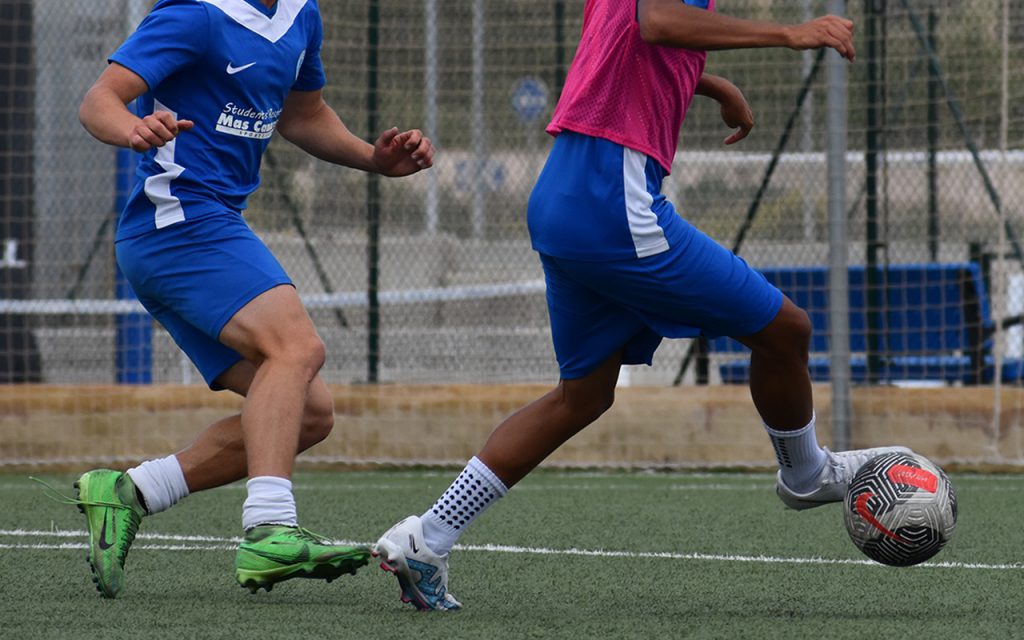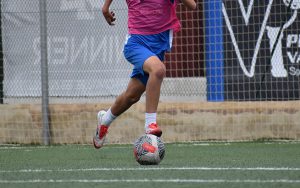Knowing your role in a 4-3-3 formation can make or break how effective you are on the field. Whether you’re a defender trying to stay compact, a midfielder orchestrating transitions, or a forward breaking defensive lines, your job isn’t just about where you stand—it’s about how you think, move, and contribute to the team’s overall shape.
The 4-3-3 is one of the most widely used formations in modern football, praised for its flexibility and balance. But to make it work, every player must understand their tactical responsibilities. That’s why this system is frequently broken down in elite-level training environments—especially at position-focused soccer camps, where players experience tactical systems like the 4-3-3 firsthand.
Let’s walk through each position and see how to master your role within this classic yet demanding setup.
Table of Contents
- What Makes the 4-3-3 Formation Unique?
- Role of the Full-Backs (Left Back & Right Back) 🛡️➡️
- Role of the Center-Backs (CBs) 🧱
- Role of the Defensive Midfielder (CDM) 🧠🧹
- Role of the Central/Box-to-Box Midfielders (CMs) 🏃♂️🔁
- Role of the Wingers (Left Wing & Right Wing) 🌀
- Role of the Striker (CF) 🎯
- How to Learn Your Role Better
- Be the Piece That Makes the System Work
What Makes the 4-3-3 Formation Unique?
The 4-3-3 features:
- 4 defenders (2 center-backs, 2 full-backs)
- 3 midfielders (usually a pivot and two advanced or box-to-box players)
- 3 attackers (a central striker and two wide wingers)
This structure offers:
✅ Width in attack
✅ Central stability in midfield
✅ Flexibility in both possession and pressing
But the formation’s success depends on how well each player executes their part. Let’s break it down.
Role of the Full-Backs (Left Back & Right Back) 🛡️➡️
Modern full-backs in a 4-3-3 must be more than just defenders.
Responsibilities:
- Support the winger in attack by overlapping
- Track back quickly to prevent counters
- Stay wide to stretch the pitch
- Deliver crosses and join buildup play when possible
Key traits:
🏃♂️ Stamina
🧠 Awareness (knowing when to go forward vs. stay back)
⚡ Speed, especially in transitions
Full-backs must communicate constantly with the winger ahead and the center-back beside them.
Role of the Center-Backs (CBs) 🧱
In a 4-3-3, the center-backs are the foundation of the team’s defensive stability.
Responsibilities:
- Mark the striker and cover central space
- Distribute from the back under pressure
- Cover behind full-backs when they push forward
- Stay connected to the midfield
Key traits:
💪 Physical strength
🗣️ Vocal leadership
🎯 Passing accuracy (especially when building from the back)
They must read the game well and organize the line. One small lapse can lead to overloads.
Role of the Defensive Midfielder (CDM) 🧠🧹
This is often the pivot—the connector between defense and midfield.
Responsibilities:
- Shield the back four
- Intercept passes and break up play
- Start attacks from deep positions
- Control the tempo of the game
Key traits:
🔁 Composure
📍 Positional discipline
🎩 Vision and short passing
Think of players like Sergio Busquets or Rodri—quiet but absolutely essential.
Role of the Central/Box-to-Box Midfielders (CMs) 🏃♂️🔁
These midfielders drive the team forward and support both ends of the pitch.
Responsibilities:
- Make late runs into the box
- Help maintain possession under pressure
- Track opposing midfielders
- Provide passing lanes and link-up options
Key traits:
⚡ Work rate
⚙️ Tactical discipline
👟 First touch and passing under pressure
They’re your team’s engine. Without them, the formation loses its balance.
Role of the Wingers (Left Wing & Right Wing) 🌀
Wingers in a 4-3-3 stretch the field, beat defenders, and create chances.
Responsibilities:
- Stay wide and create 1v1s
- Cut inside or deliver crosses depending on the system
- Press full-backs during defensive phases
- Track back to cover space behind
Key traits:
🔥 Speed
🎯 Dribbling and delivery
🧠 Awareness of defensive shape
Elite wingers understand that their role doesn’t stop when they lose the ball—pressing and shape matter just as much as flair.
Role of the Striker (CF) 🎯
The striker is the focal point in a 4-3-3, but not just for scoring.
Responsibilities:
- Hold up play and bring wingers into action
- Make diagonal runs to pull defenders out of shape
- Be the first line of defense when pressing
- Time runs to beat the offside trap
Key traits:
⚔️ Strength and movement
🧠 Spatial awareness
🎯 Finishing instinct
A great striker in a 4-3-3 knows when to lead the line and when to drop in to link play.
How to Learn Your Role Better
🔁 Rewatch game footage of your own matches and pro games
🧠 Ask your coach for position-specific feedback
🎮 Play position-focused drills that simulate real-game movements
📓 Journal your matches—note what went well and what didn’t
Learning your role is about understanding where you fit in the bigger system, not just what you do with the ball.
Be the Piece That Makes the System Work
To thrive in your role in a 4-3-3 formation, you need to combine technical skills with tactical intelligence. Every position has a purpose—and when all 11 players understand their role, the formation becomes a well-oiled machine.
It’s not just about where you are on paper. It’s about how you move, how you think, and how well you read the flow of the game.
And if you want to master these details in a training environment that focuses on more than just drills—one that actually teaches you how systems like the 4-3-3 work in real time—then joining IDA Valencia could be your best next step.
Own your role. Embrace the shape. Elevate your game. ⚽🧠📐




